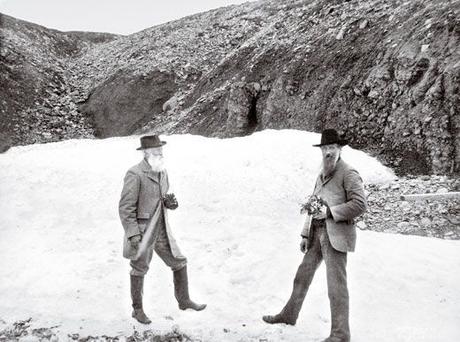On an intersection of the West Highland Way there is an intersection with the John Muir Way. Not only is the John Muir Way a remarkable trip in its own right, but it is named in honor of Scotland’s foremost naturalist, environmentalist, and maverick, John Muir.
 John Muir Way Map
John Muir Way Map
Born in Dunbar, Scotland on April 21st, 1838. Muir delighted in exploring the wildness of Scotland around his childhood home with his brother, David, hunting for birds nests in his native Scotland. Muir’s childhood was a hardscrabble one. Muir’s father believed in the rod, and, as Muir recalled later in life ’The old Scotch fashion of whipping for every act of disobedience… was still kept.’ Living in the Wisconsin backwoods was rugged and challenging. Working on his father’s farm, Muir was tasked to dig a 90 foot deep mining shaft that nearly killed him. After surviving a difficult childhood upbringing, Muir dropped out of college during the American Civil War and sought refuge in Canada. He returned after the war and began to travel the United States. He spent time living among Native American tribes, becoming sympathetic to their plight, and finding his beliefs were similar to their own. At times, he worked for the U.S. Government, taking part in several expeditions to the Alaskan Wilderness.

Through his journeys, Muir became convinced of the importance of the protection of nature. An admirer of the American philosophers Ralph Waldo Emerson and Henry David Thoreau, Muir began to develop his own ideas about life. His experiences traveling throughout North America lead Muir to believe that the wild environment around him was an inherent good. For Muir, everything in nature was connected. In the 19th century, he was a modern-day environmentalist.
Muir’s views went against the conventional wisdom of the time. Most of the Yosemite Valley, which was designated a state park in 1864, ‘emerged as a crazy quilt of roads, hotels, and cabins, and pastures and pens for cattle, hogs, mules, and horses.’ Ranchers brought their sheep into parks to eat the local vegetation. Muir denounced this as a plague of ‘hoofed locusts’. ’I am on the side of nature in any conflict with man.’ he declared. John Muir fought for what he believed for the rest of his life.
Muir was not afraid to campaign for protecting the environment. He used the politics of persuasion to gain a mass following and cultivated support among crucial politicians. Muir became a prominent author. He wrote dozens of articles and several books. Muir was not afraid to covet political friends, and coerce politicians to achieve his goals. He took on opponents in California and in the U.S. Congress to establish Yosemite National Park.
Muir’s political lobbying paid off. Muir counted President Theodore Roosevelt as one of his personal friends, even taking him backpacking in Yosemite in 1903. Roosevelt was an upper-class New Yorker and a hunter. He had a deep concern for the environment after seeing most of the wilderness in his home state clear cut. As a rancher in his youth Roosevelt had witnessed the cattle boom and bust first hand from overgrazing. First as Governor of New York, and then as President of the United States Roosevelt would be one of Muir’s greatest allies. Roosevelt helped create new national parks and added the national forests.
Despite all of these successes, not every plan at preserving wildness succeeded. The most considerable setback was the damning of the Hetch Hetchy Valley. Even though Hetch Hetchy was in a National Park, the valley’s remoteness did not preclude it from development. Paradoxically, because it was less accessible to visitors, the land appeared in less need of conservation by the Federal Government. In 1913, Congress voted to construct a reservoir in Hetch Hetchy Valley. It was Muir’s most significant political failure. He had dedicated so much to ensure that the land would remain as unchanged as possible, but in a bitter irony, by limiting access, he limited the ability to organize people effectively in its preservation.
When John Muir died on December 24th, 1914 he left behind a dedicated legacy of service to the wilderness. ’the world has lost one of the most remarkable men of our time’ one reporter wrote. His work today still inspires legions of ecologists and environmentalists.
In 2010, it was decided to expand a long coast to coast trail across Scotland’s natural wildness, and dedicate it to John Muir on the 100th anniversary of his death in 2014. Crossing through some of Scotland’s most beautiful wildlife areas, the John Muir Way is a remarkable monument in the memory of a man who fought for nature.
